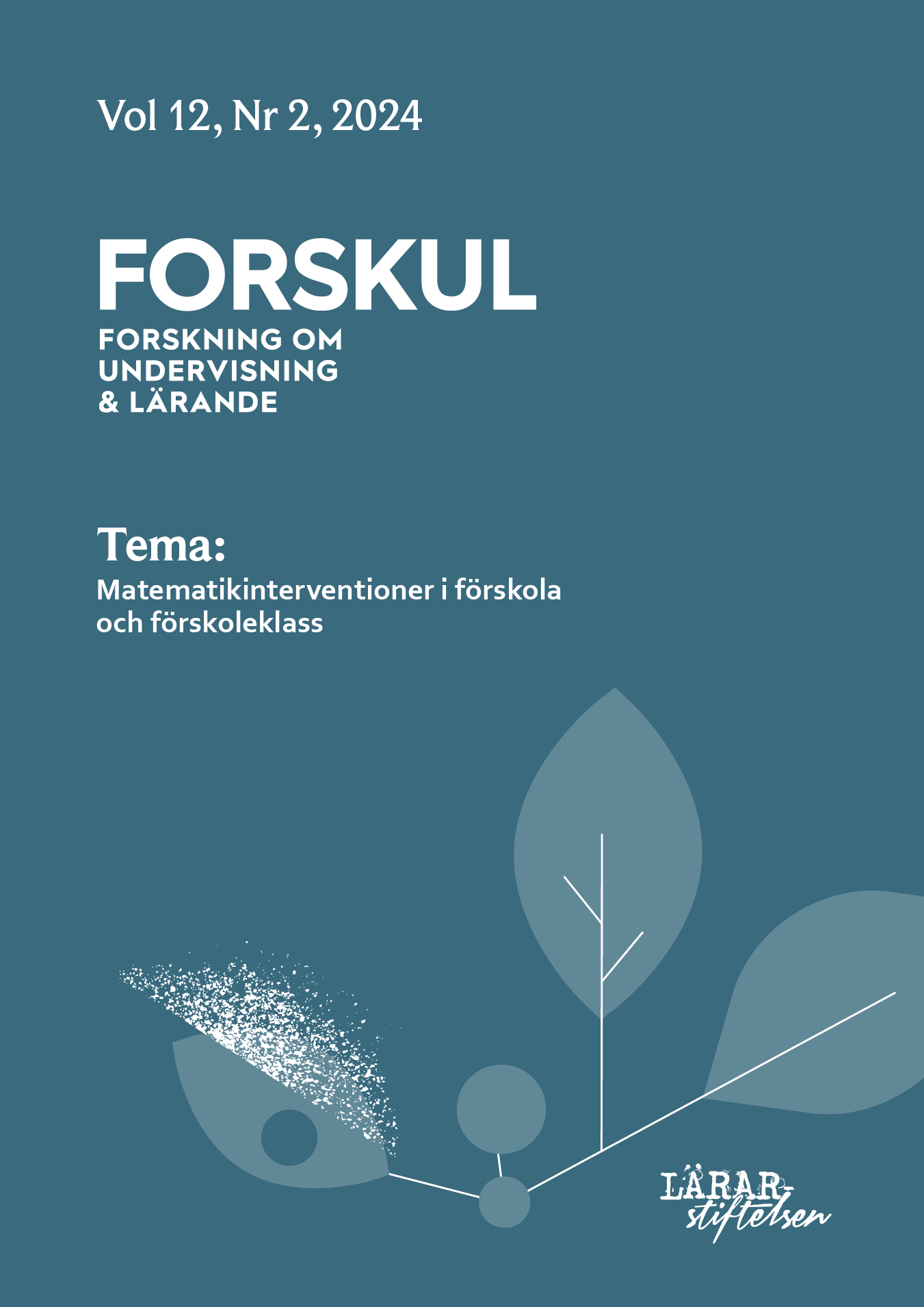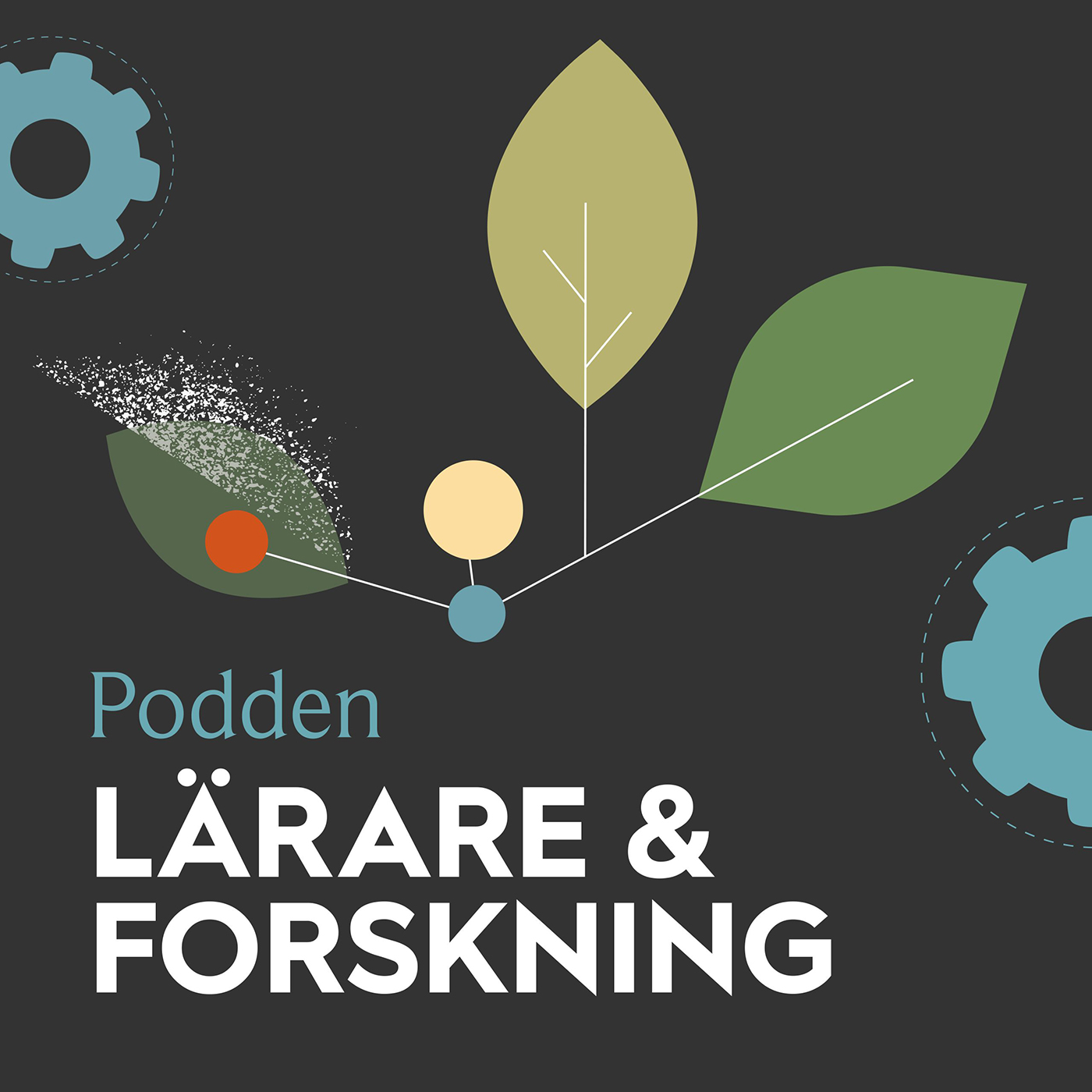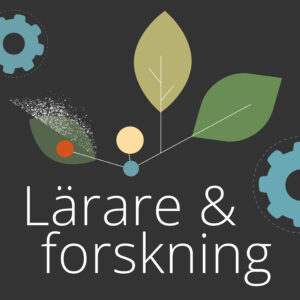Att utveckla undervisning om tal och talrelationer i förskoleklass
DOI:
https://doi.org/10.61998/forskul.v12i2.23896Nyckelord:
matematik, förskoleklass, intervention, undervisningsutveckling, kunskapsprodukt, undervisning om talrelationerAbstract
Syftet med artikeln är att bidra med kunskap om hur en intervention, med fokus på undervisning om tal och talrelationer i förskoleklass, kan utveckla matematikundervisning. I interventionen har en undervisningsutvecklande modell tagits som utgångspunkt, där planering, genomförande och reflektion över undervisning har skett i en cyklisk process tillsammans med kollegor och forskare. Då interventionen sträckte sig över fyra år, gavs möjligheter att identifiera och förändra komponenterna i relation till syfte och kontext. En nyckelkomponent är de reflektionsunderlag som utvecklades och hur de bidrog till reflektion kring undervisning och lärande. De vetenskapligt förankrade aktiviteterna som förfinades är en annan nyckelkomponent. Kunskapsprodukten som har genererats innehåller en undervisningsguide med beprövade och designade undervisningsaktiviteter, med tillhörande reflektioner kring lärares matematikdidaktiska handlingar samt den undervisningsutvecklande modellen.
Developing the teaching of numbers and number relations in preschool class
The purpose of this article is to contribute knowledge about how an intervention, focused on teaching numbers and number relations in preschool class, can develop teaching. In the intervention, we employed a practice-oriented model based on planning, teaching, evaluating, and reflecting on teaching in an iterative process, in collaboration with colleagues and researchers. We carried out this intervention over four years, during which we identified key components of the model that were essential for the development of mathematics teaching. We also changed these components based on the purpose and local context. A key component is the reflection documents that were developed and how they contributed to reflection on teaching and learning. Another key component is the research-based activities that we refined. The knowledge product includes a teaching guide with documented and designed teaching activities with reflections on the teacher's enactment of the mathematical activities as well as the teaching model.
Referenser
Andrée, M. & Eriksson, I. (2019). A research environment for teacher-driven research–some demands and possibilities. International Journal for Lesson and Learning Studies, 9(1), 67–77. https://doi.org/10.1108/IJLLS-02-2019-0015
Bakker, A. (2018). Design research in education: A practical guide for early career researchers. Routledge.
Baroody, A. & Purpura, D. (2017). Early number and operations: Whole numbers. I J. Cai (Red.), Compendium for research in mathematics education (s. 308–354). National Council of Teachers of Mathematics.
Björklund C., Ekdahl A.-L. & Runesson Kempe, U. (2020). Implementing a structural approach in preschool number activities. Principles of an intervention program reflected in learning. Mathematical Thinking and Learning, 23(1), 72–94. https://doi.org/10.1080/10986065.2020.1756027
Björklund, C., Marton, F. & Kullberg, A. (2021). What is to be learnt? Critical aspects of elementary arithmetic skills. Educational Studies in Mathematics, 107(2), 261–284. https://doi.org/10.1007/s10649-021-10045-0
Carlgren, I. (2012). The learning study as an approach for “clinical” subject matter didactic research. International Journal for Lesson and Learning Studies, 1(2), 126–139. https://doi.org/10.1108/20468251211224172
Carlgren, I. (2020). Redaktionell kommentar 2020: 1. Forskning om undervisning och lärande, 8(1), 3–8.
Century, J., Rudnick, M. & Freeman, C. (2010). A framework for measuring fidelity of implementation: A foundation for shared language and accumulation of knowledge. American journal of evaluation, 31(2), 199–218. https://doi.org/10.1177/1098214010366173
Century, J. & Cassata, A. (2016). Implementation research: Finding common ground on what, how, why, where, and who. Review of research in education, 40(1), 169–215. https://doi.org/10.3102/0091732X16665332
Cobb, P., Boufi, A., McClain, K. & Whitenack, J. (1997). Reflective discourse and collective reflection. Journal for research in mathematics education, 28(3), 258–277. https://doi.org/10.2307/749781
Cobb, P., Confrey, J., DiSessa, A., Lehrer, R. & Schauble, L. (2003). Design experiments in educational research. Educational researcher, 32(1), 9–13. https://doi.org/10.3102/0013189X032001009
Denscombe, M. (2017). The good research guide: For small-scale social research projects. McGraw-Hill Education.
Ekdahl, A.-L. (2019). Teaching for the learning of additive part-whole relations: The power of variation and connections. [Doktorsavhandling, Jönköping University].
Ekdahl, A.-L. (2020). Different learning possibilities from the same activity—Swedish preschool teachers’ enactment of a aumber relation activity. Scandinavian Journal of Educational Research, 65(4), 601–614. https://doi.org/10.1080/00313831.2020.1739131
Eriksson, I. (2018). Lärares medverkan i praktiknära forskning: Förutsättningar och hinder. Utbildning och Lärande, 12(1), 27–40.
Eriksson, I. (2021). Från att veta vad som fungerar till att driva utveckling av undervisningen. I Å. Hirsh & A. Olin (Red.), Skolutveckling i teori och praktik (s. 185–200). Gleerups.
Fejes, A. & Thornberg, R. (2015). Handbok i kvalitativ analys (2 uppl.). Liber AB.
Gravemeijer, K. & Cobb, P. (2013). Design research from the learning design perspective. I T. Plomp & N. Nieveen (Red.), Educational design research (s. 73–113). Netherlands institute for curriculum development.
Gueudet, G., Pepin, B. & Trouche, L. (2013). Collective work with resources: An essential dimension for teacher documentation. ZDM, 45, 1003–1016. https://doi.org/10.1007/s11858-013-0527-1
Harvey, F. & Teledahl, A. (2022). Characteristics of professional learning communities in mathematics: A systematic review. Mathematics Teacher Education and Development, 24(1), 72–95.
Jaworski, B. (2006). Theory and practice in mathematics teaching development: Critical inquiry as a mode of learning in teaching. Journal of mathematics teacher education, 9(2), 187–211. https://doi.org/10.1007/s10857-005-1223-z
Joffredo-Le Brun, S., Morellato, M., Sensevy, G. & Quilio, S. (2018). Cooperative engineering as a joint action. European Educational Research Journal, 17(1), 187–208. https://doi.org/10.1177/1474904117690006
Jordan, N. C., Glutting, J., Dyson, N., Hassinger-Das, B. & Irwin, C. (2012). Building kindergartners' number sense: A randomized controlled study. Journal of educational psychology, 104(3), 647–660. https://doi.org/10.1037/a0029018
Konrad, U. & Bakker, A. (2018). From implementer to co-designer: A teacher’s changing role in a design research project. I A. Bakker (Red.), Design research in education: A practical guide for early career researchers (s. 246–254). Routledge.
Kullberg, A., Vikström, A. & Runesson, U. (2020). Mechanisms enabling knowledge production in learning study. International Journal for Lesson and Learning Studies, 9(1), 78–91. https://doi.org/10.1108/IJLLS-11-2018-0084
Lindberg, V., Kempe, U. R. & Eriksson, I. (2023). Kunskapsprodukter för lärarprofessionen–Skolforskningsinstitutets projekt 2016 och 2017. Forskning om undervisning och lärande, 11(3), 58–84. https://doi.org/10.61998/forskul.v11i3.18052
Marton, F. (2015). Necessary conditions of learning. Routledge. https://doi.org/10.4324/9781315816876
McKenney, S. & Reeves, T. C. (2013). Systematic review of design-based research progress: Is a little knowledge a dangerous thing? Educational researcher, 42(2), 97–100. https://doi.org/10.3102/0013189X12463781
McKenney, S. & Reeves, T. (2018). Conducting educational design research. Routledge.
Morris, A. K. & Hiebert, J. (2011). Creating shared instructional products: An alternative approach to improving teaching. Educational Researcher, 40(1), 5–14. https://doi.org/10.3102/0013189X10393501
Mulligan, J. T., Mitchelmore, M. C., English, L. D. & Robertson, G. (2010). Implementing a pattern and structure mathematics awareness program (PASMAP) in Kindergarten. I C. Hurst, L. Sparrow & B. Kissane (Red.), Proceedings of the 33rd Annual Conference of the Mathematics Education Research Group of Australasia Mathematics Education Research Group of Australasia (s. 796–803). Mathematics Education Research Group of Australasia.
Neuman, D. (1987). The origin of arithemtic skills: A phenomographic approach. [Doktorsavhandling, Göteborgs universitet].
Neuman, D. (2013). Att ändra arbetssätt och kultur inom den inledande aritmetikundervisningen. Nordic Studies in Mathematics Education, 18(2), 3–46.
Nieveen, N. & Folmer, E. (2013). Formative evaluation in educational design research. Design Research, 153(1), 152–169.
Pepin, B., Gueudet, G. & Trouche, L. (2013). Re-sourcing teachers’ work and interactions: A collective perspective on resources, their use and transformation. ZDM, 45, 929–943. https://doi.org/10.1007/s11858-013-0534-2
Plomp, T. (2013). Educational design research: An introduction. I T. Plomp & N. Nieveen (Red.), Educational design research (s. 11–50). Netherlands institute for curriculum development.
Runesson, U., Lövström, A. & Hellquist, B. (2018). Beyond the borders of the local: How “instructional products” from learning study can be shared and enhance student learning. International Journal for Lesson and Learning Studies, 7(2), 111–123. https://doi.org/10.1111/ejed.12336
Sarama, J. & Clements, D. H. (2009). Early childhood mathematics education research: Learning trajectories for young children. Routledge.
Selander, S. & Kress, G. (2021). Design för lärande: ett multimodalt perspektiv. Studentlitteratur AB.
Sensevy, G., Quilio, S. & Mercier, A. (2015). Arithmetic and comprehension at primary school. I X. Sun, B. Kaur & J. Novotna (Red.), Proceedings of ICMI STUDY 23: Primary mathematics study on whole number, (s. 472–479). University of Macau.
Skolverket. (2019) Kartläggning i förskoleklass. https://www.skolverket.se/undervisning/forskoleklassen/kartlaggning-i-forskoleklassen
Skolverket, (2022) Läroplan för grundskolan, förskoleklassen och fritidshemmet- Lgr 22. https://www.skolverket.se/download/18.2cb9d0c18340c7dae31dd/1663664935672/pdf9718.pdf
Shimizu, Y. & Kang, H. (2022). Discussing students’ thinking and perspectives for improving teaching: An analysis of teachers’ reflection in post-lesson discussions in lesson study cycles. ZDM–Mathematics Education, 54(2), 419–431. https://doi.org/10.1007/s11858-022-01371-5
Stigler, J. W. & Thompson, B. J. (2009). Thoughts on creating, accumulating, and utilizing shareable knowledge to improve teaching. The Elementary School Journal, 109(5), 442–457. https://doi.org/10.1086/596995
Sterner, G. & Helenius, O. (2015). Number by reasoning and representations–the design and theory of an intervention program for preschool class in Sweden. Development of Mathematics Teaching: Design, Scale, Effects, 159–168.
Sterner, G., Nagy, C. & Nyström, P. (2023). A scaled-up mathematics intervention in preschool classes. Scandinavian Journal of Educational Research, 1–11. https://doi.org/10.1080/00313831.2023.2250352
Van den Akker, J., Gravemeijer, K., McKenney, S. & Nieveen, N. (2006). Educational design research. Routledge. https://doi.org/10.4324/9780203088364
Van den Akker, J. (2013). Curricular development research as a specimen of educational design research. I T. Plomp & N. Nieveen (Red.), Educational design research (s. 52–71). Netherlands institute for curriculum development.
Višňovská, J., Cortina, J. L. & Eckert, A. (2023). Resource design for re-sourcing teaching. I B. Pepin, G. Gueudet & J. Choppin (Red.), Handbook of digital resources in mathematics education. Springer International Publishing. https://doi.org/10.1007/978-3-030-95060-6_39-1
Westerholm, K. & Samuelsson, J. (2020). Att utveckla god taluppfattning hos alla elever i förskoleklassen interventionsstudie i matematik. Forskning om undervisning och lärande, 8(2), 46–68.
Widén, P. (2015). Textanalys. I A. Fejes & R. Thornberg. Handbok i kvalitativ analys (2 uppl., s. 176–193). Liber AB.
Åkerfeldt, A. & Svärdemo Åberg, E. (2021). Designs for learning: A research approach. International Journal of Educational Methodology, 7(4), 547–555. https://doi.org/10.12973/ijem.7.4.547
Publicerad
Referera så här
Nummer
Sektion
Kategorier
Licens
Copyright (c) 2024 Anna-Lena Ekdahl, Birgitta Lundberg

Det här verket är licensierat under en Creative Commons Erkännande 4.0 Internationell-licens.
Författare till innehåll publicerat i Forskul behåller upphovsrätten till sina verk. Artiklar publiceras under villkoren i en Creative Commons-licens CC BY, som tillåter användning, nedladdning, distribution, länkning till och reproduktion i vilket medium som helst, förutsatt att originalverket är korrekt citerat.






